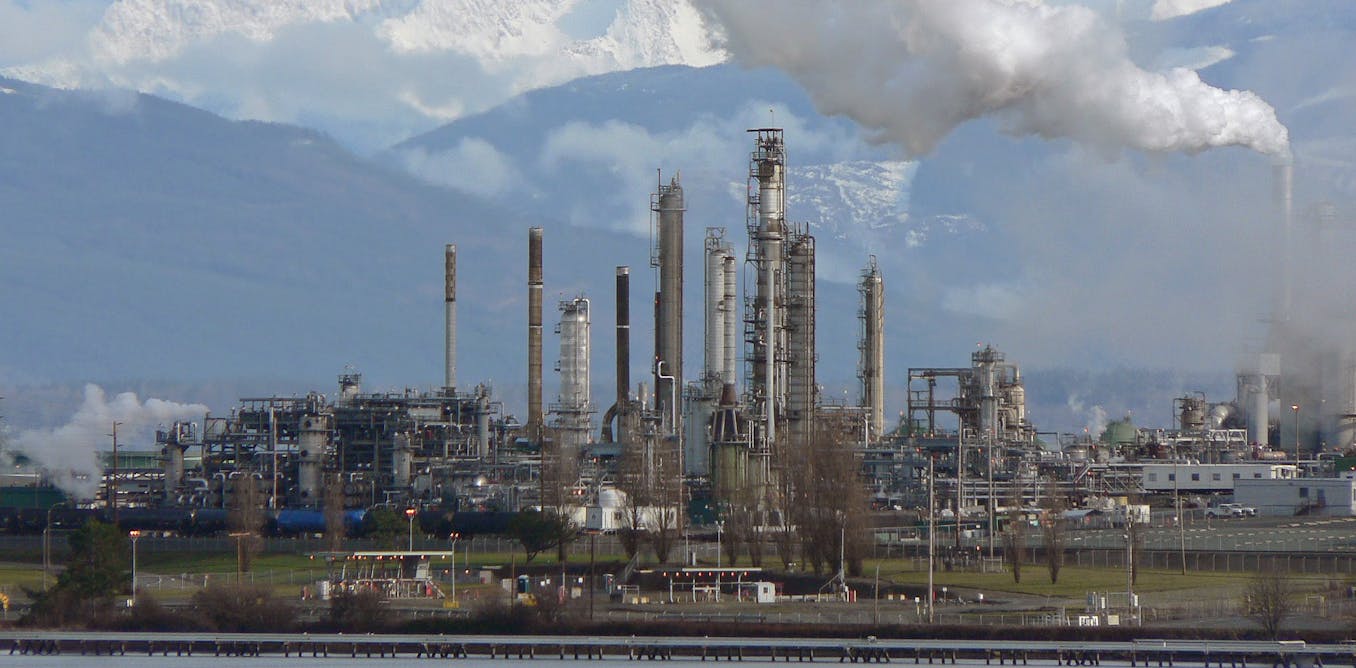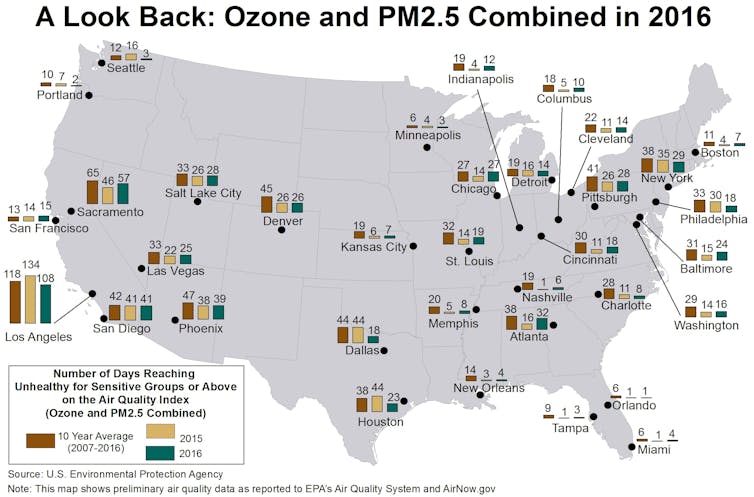
Many critics of government regulation argue that it reduces economic growth by making it more expensive for businesses to operate. But there is a strong counterargument that a clean environment is consistent with long-term economic prosperity. Here’s a compelling example: Since 1980, U.S. gross domestic product has grown by 165 percent, while emissions of six common air pollutants decreased by 67 percent – thanks largely to government regulation.
Science is a critical foundation of effective regulation. I have studied air pollution and air quality for over 30 years, and have been directly involved for a decade with the U.S. Environmental Protection Agency’s reviews of scientific findings on air pollution. This includes seven years of service on the agency’s Clean Air Scientific Advisory Committee, or CASAC, and stints on 10 specialized panels focused on individual pollutants.
In my view, the Trump administration’s focus on short-term profit-taking based on regulatory rollback fails to recognize the importance of science-based regulation. Alarmingly, a multi-pronged attack on science at EPA is threatening air quality standards that by law are required to protect public health.

Two key pollutants under review
Under the Clean Air Act, EPA is required to conduct regular reviews of national air quality standards for major pollutants, and to revise those standards if the latest science indicates that they are not adequately protecting public health. It is now reviewing standards for ozone and particulate matter – the two most significant air pollution regulations on the books.
Emissions from cars, trucks and power plants react in sunlight to form excessive amounts of ozone in the lower atmosphere. Fine particles are produced from many sources, including fossil fuel combustion.
These pollutants harm the public generally and at-risk groups in particular, including children, the elderly, outdoor workers and people with asthma. Health impacts include respiratory, cardiovascular and other diseases and premature death. Today more than 124 million Americans live in areas with breathable ozone above health protective levels, and over 23 million live in areas with high levels of fine particles.

Science-based standards
The Clean Air Act requires EPA to carry out a periodic “thorough review” of the “latest scientific knowledge” underpinning regulations for major air pollutants. In this process, an “independent scientific review committee” must assess existing standards and recommend revised or new ones as appropriate. This is CASAC’s job.
The committee has seven members, appointed by the EPA administrator. But air pollution standards draw on many scientific disciplines, including air quality, epidemiology, toxicology, medicine, biostatistics, ecology, climate and risk assessment. This is more expertise than seven people can provide. Therefore, for four decades EPA has organized panels of additional experts to help CASAC review the latest research.
This process properly established the science for health-protective air quality standards – until now.
Replacing scientists on CASAC
Former EPA Administrator Scott Pruitt wrote a memorandum in 2017 that changed the rules for appointments to CASAC. It directed that appointments should be based on geographic diversity and affiliation with state, local and tribal governments, and called for more member turnover.
Pruitt also barred scholars who had received EPA research grants from serving on the committee. But often these are precisely the highly respected scientific leaders that CASAC needs. The federal government has long recognized that holding a research grant does not infringe on a scientist’s “ability to offer independent scientific advice.” In contrast, Pruitt allowed people who received funding from regulated industries to serve on CASAC.
On October 10, 2018, acting Administrator Andrew Wheeler followed through on Pruitt’s directive by replacing five CASAC members. The committee now includes one researcher, staff from one federal and four state agencies and an industry consultant. It lacks scientific horsepower compared to prior years.
In a separate memorandum on May 9, 2018, Pruitt attacked the foundation of the air quality standard review process. Among other things, he called for shortening the time for CASAC’s work and commingling reviews of science and policy that were previously kept separate.
Rushing to judgment
Until now, these reviews took an average of three years. They focused on three major EPA staff reports that summarized scientific findings on health effects, established the scientific basis for quantifying health risk, and identified potential options for retaining, revising or rescinding the current standard or setting a new one. These steps were carefully designed to clearly establish the science before making judgments about policy.
EPA recently announced the schedule for its next review of the ozone standard. The agency wants CASAC’s input in one year, which will require the committee to assess policy options before finalizing the science and force it to hold fewer public meetings. I expect it to be a rushed process that inappropriately intermixes science and policy and elbows out the public.
In the last review of the ozone standard, completed in 2014, CASAC was supported by an expert review panel that I chaired. In addition to the seven members of CASAC, it included 13 nationally and internationally recognized experts from a wide range of relevant scientific disciplines. EPA requested nominations for a new ozone review panel in July 2018, but in October the agency told me and other candidates out of the blue that no panel would be formed.
Moreover, although CASAC is also reviewing the particulate matter standard with a goal of finishing by 2020, EPA announced that it was disbanding its existing Particulate Matter Review Panel as well. Now the agency is asking new, inexperienced CASAC members to review the two most significant air pollution regulations simultaneously, without the necessary expertise and in record time.

Rebooting the review process
Studies show that air pollution still kills thousands of Americans every year. Given this toll, I do not believe CASAC or the public should accept changes that undermine the quality, credibility and integrity of the scientific basis for air quality standards.
CASAC members are not required to accept EPA’s unrealistic schedule and terms for the ozone and particulate matter reviews. They can call for forming an Ozone Review Panel and reinstating the Particulate Matter Review Panel. And acting Administrator Wheeler is not bound to follow Pruitt’s directives.
If Wheeler wants to revise the CASAC membership criteria and the process for reviewing air quality standards, I believe he should seek input from EPA staff, CASAC and the public. He will get some input on Nov. 29, when CASAC holds a public teleconference on its plan for reviewing the ozone standard; and Dec. 12, when the committee holds a public meeting to review the particulate matter science assessment. And if EPA fails to restore science to its proper role, Wheeler is also likely to hear from Congress.![]()
H. Christopher Frey, Glenn E. Futrell Distinguished University Professor of Environmental Engineering, North Carolina State University
This article is republished from The Conversation under a Creative Commons license.

